Full Guide To Calcite vs. Quartzite (This is the Difference)
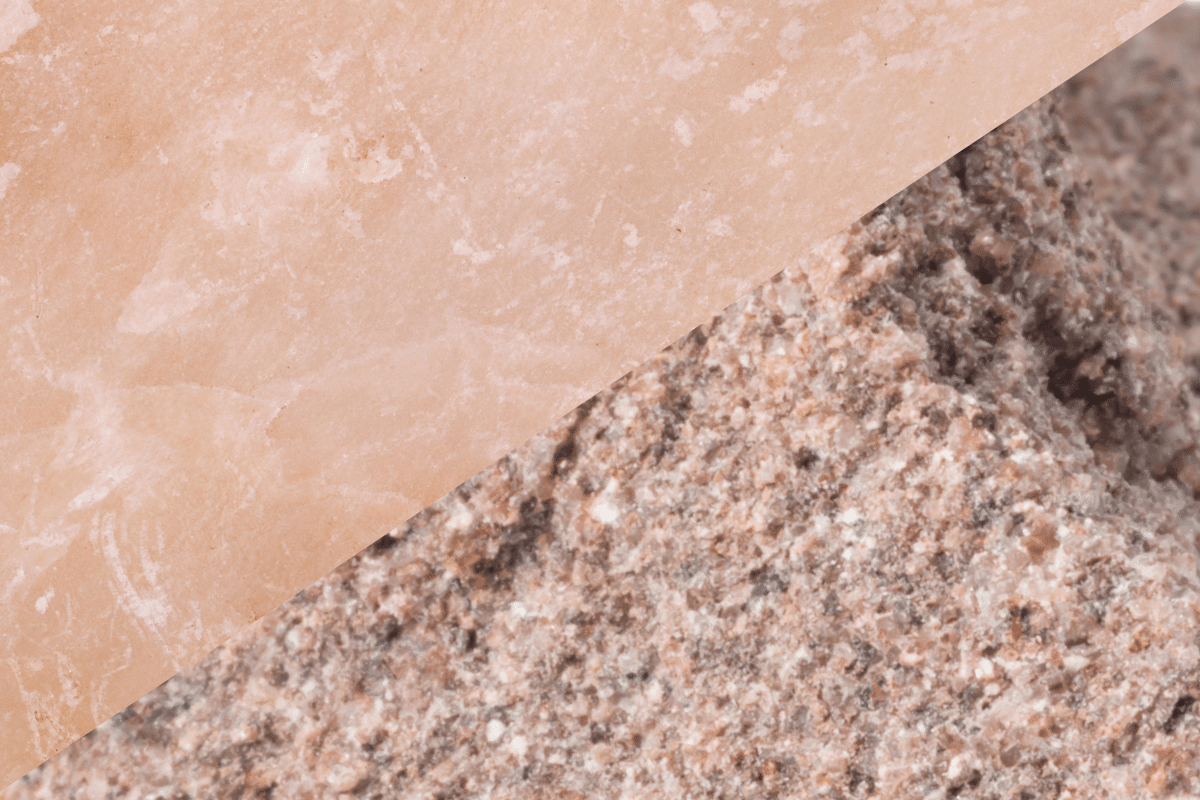
In order to work with our crystals effectively, we need to understand their properties. With crystals that look similar or have similar uses, such as calcite and quartzite, it can be difficult to determine which one to work with. The answer should always be; the one that you are drawn to the most. However, if you are looking to find the difference in physical appearance as well as metaphysical properties, you’ll find your answer here.
Both calcite and quartzite come in a variety of colors. The biggest difference is that quartzite is much stronger than calcite and is entirely opaque. Calcite can be translucent, transparent or opaque. Quartzite is generally used for stabilizing emotions, whereas calcite’s main use is the unblocking and balancing of chakras.
Keep in mind that quartzite is different from quartz. Quartzite is the result of quartz being heated and pressurized, making it much denser and stronger.
Continue reading if you want to know more about the (physical) qualities of these stones, as well as how you can use them in your spiritual practice.
Also read: Calcite vs. Quartz: This Is The Difference
Want more help or information? If you have any more questions after reading this blog post or want a personal answer for your specific situation, join the free Facebook group! We promise you’ll get an answer from either our team members or a community member.
Calcite Vs. Quartzite – How To Tell The Difference?
In order to understand the difference between these two stones, we can look at the color, shape, pattern, clarity, and more. Below we’ll describe all these aspects in detail.
Composition
Calcite is made up of calcium, carbon, and oxygen, which form calcium carbonate. Calcite is formed through water that is high in calcium. When the water evaporates, the calcite is left behind. Along with quartz, it is one of the most abundant minerals on earth.
Quartzite is essentially a rock made up of quartz sandstone, or silicon dioxide. It is formed when quartz is heated and pressurized, often in the earth’s crust. As a result of this heat and pressure, the quartz grains interlock, forming a dense rock.
Color
The purest form of calcite is white, but depending on the amount and type of inclusions, it may also come in colors such as yellow, brown, green, blue, red, and orange. These colors are the result of metal ions. For example, the green color is often the result of malachite inclusions, whereas iron causes yellowish-brown discolorations, cobalt to pink, and manganese to purple ones.
Quartzite can be found in beige, white, pink, yellow, blue, brown, purple, and orange slabs. The gray and beige shades result from the rock’s accessory minerals, which are minerals that occur in the stone but are so small it isn’t considered when it’s being identified. Other colors are the result of the minerals present during a quartzite rock formation. These minerals can include phengite, chlorite, or any other naturally occurring mineral element.
Quartzite in its pure form is gray to white with sandstone banding formations. The red and pink variety originates from iron oxide trace amounts within its composition. Some quartzite stones exhibit reddish tints as a result of mica, while others are green due to the presence of fuchsite.
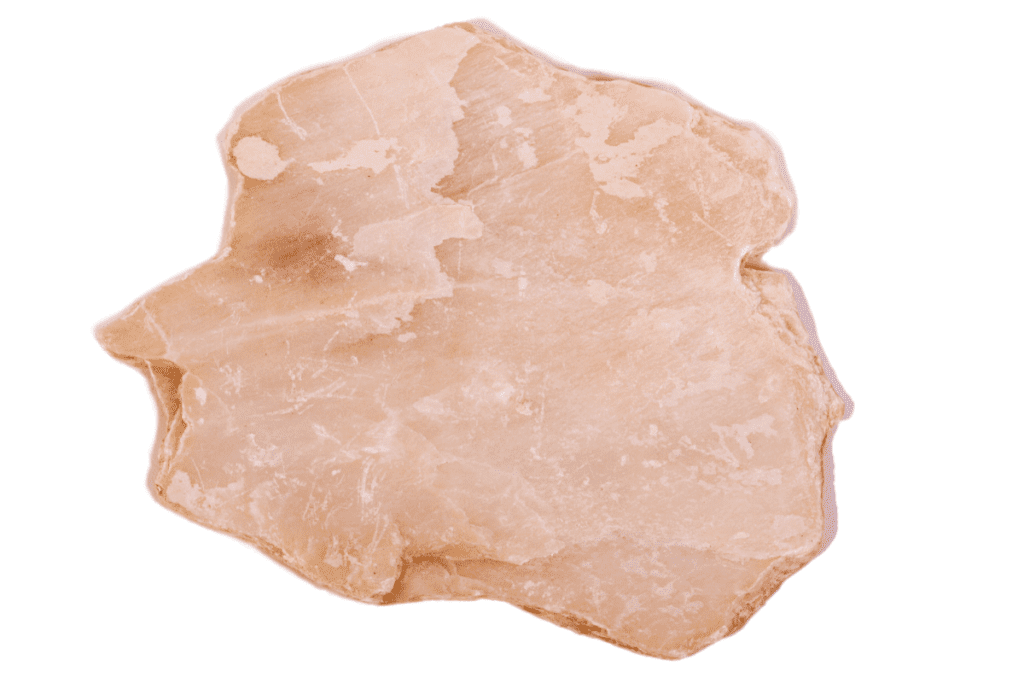
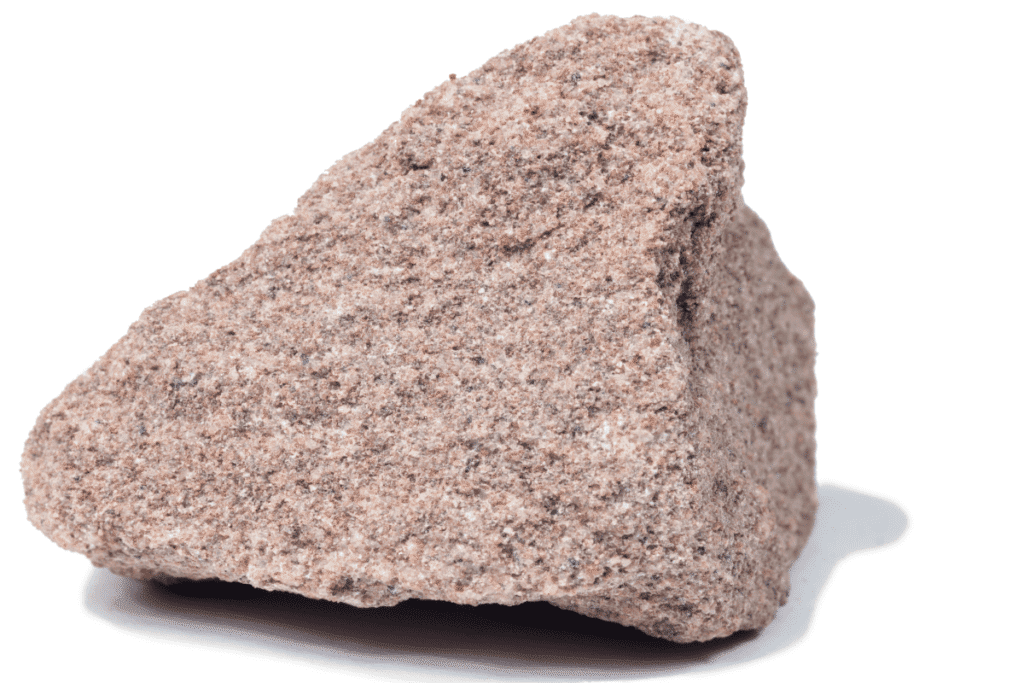
Also read: Celestite vs. Blue Calcite: This Is The Difference
Pattern and Clarity
Calcite can be transparent, translucent or opaque, depending on how many and what kind of inclusions. The stone breaks at a conchoidal fracture, which means it has a circular pattern where it is broken off, much like glass would have. Its luster is glass-like and pearly on broken edges.
Raw quartzite rocks are entirely opaque and have a sandy texture and a grainy surface, but can be polished to have a glassy luster. There are visible veiny inclusions on a natural quartzite, which are good at hiding the stones’ imperfections.
Hardness
Calcite is a very soft stone, rating 3 on the Mohs scale. If you’re unfamiliar, the Mohs scale of hardness determines a stone’s hardness by measuring how scratch-resistant it is. According to this scale, a stone can scratch any other mineral with a lower score. For reference, talc is a 1, whereas diamond is a 10.
The softness of calcite means it can easily be scratched by a knife and should be kept away from water as much as possible.
Quartzite’s mineral hardness is remarkably higher than quartz from which it’s made. This is a result of the joining of the grains closely together. Quartz scores a 7, whereas quartzite scores a 7- 10 on the Mohs Scale, making it one of the hardest and most durable stones. The stone requires little maintenance and does not lose its natural look.
Location
Calcite is mined in many locations around the world. The most noticeable calcite producers are Mexico, Belgium, Namibia, and Iceland. Quartzite can be found in Australia, India, and Ireland, among other parts of the world.
Also read: Pink Calcite vs Rose Quartz: This is the Difference
Care
Quartzite can be cleaned using mild detergent and warm water. Beware that cleaning solutions that contain harsh chemicals can cause corrosion on the stone. Wipe finished quartzite pieces with a soft microfiber cloth.
Calcite, on the other hand, is a soft stone that cannot handle water. We, therefore, recommend only wiping this stone with a soft cloth. If there’s a stain and you need to use water, you can do so. Just wet the cloth and wipe it down with a dry cloth immediately after. This shouldn’t affect the stone.
If you’re using these stones for their metaphysical properties, make sure to cleanse and recharge your stones regularly, but at least once a month. The purpose of this is to get rid of the negative energies that may have clouded the stone and to fill it with positive ones instead.
For calcite, you can
Water Cleansing
Only quartzite can be cleansed under running water. Running water cleanses off the negative energies accumulated on the stone. Do not do this for calcite, as it will turn your stone brittle and dull.
Sound Cleansing
Sound cleansing is done to restore the vibrations of the stone after use. This can be done using bells and singing bowls or any other form of music. If this is your preferred method of cleansing, you can use the video below; just let the sound fill the room. You might also want to meditate or visualize at this time.
Light Charging
Both stones can be cleansed and recharged using the sun or the moonlight. Do not expose the stones to direct sunlight for prolonged hours to prevent damage or fading. We also do not recommend leaving these out during midday. A better option would be the morning sun.
Clear Quartz or Selenite Cleansing and Charging
Clear quartz and selenite are some of the best self-cleansing crystals. Leaving the crystals in the presence of clear quartz or selenite for a day will both cleanse and fill the stone with positive energies.
(Meta)physical Healing Properties
Beware that crystals are never a replacement for professional medical help. If you have any issues, see a doctor first and follow their advice.
Calcite is all about bringing balance to our bodies, mind, and spirit. This all-rounded stone is effective in chakra activation, unblocking blockages within the chakra system and heightening spiritual consciousness. Mentally and emotionally, the stone will bring motivation, mental clarity, and emotional intelligence. The stone’s bright energies encourage self-reflection, balance, and emotional healing.
In addition to this, calcite can be used to relieve and heal illnesses within our bodies. The stone helps with organ detox, especially bladder and kidneys. The stone is also said to help the body in the absorption of calcium, which prevents illnesses like arthritis and other bone-related problems. This stone also improves blood circulation and overall body immunity.
Keep in mind, that the exact properties of calcite depend on what color yours is. For example, blue calcite helps unblock the throat chakra specifically, whereas yellow calcite is great for the solar plexus. More about the colors and chakra system, you’ll find further down this post.
Quartzite can be used to establish balance in our lives, inspires change and bring spiritual healing. The stone is powerful in breaking bad habits, addiction, and old patterns while serving as an anchor to prevent relapses. It also eases transition and change.
Additionally, this stone is useful for hyperactivity and sedating an over-reactive mind. Quartzite can also be used to invite harmony and, nurture relationships, improve communication, stability, and peace.
Also read: Calcite vs Aragonite: This is the Difference
Zodiac Association
Calcite isn’t a birthstone for any of the months. However, it is associated with the moon, which is also the ruling ‘planet’ of cancer. Cancers are probably the sweetest out of all the zodiac signs and the most sensitive to other people’s emotions. This, however, leaves them susceptible to being overly emotional when faced with a difficult situation. Calcite will help Cancer process their emotions and get rid of negative thoughts. This way, they do not get stuck on an issue for too long but instead, spend their time actively finding solutions and moving forward.
Quartzite also isn’t a birthstone, but it is linked to Venus, making it a great stone for Taurus and Libra. Its healing properties help the zodiac navigate life and increase clarity and mental strength. The stone also encourages self-expression in these signs.



Chakra Association
Both calcite and quartzite are associated with a different chakra, depending on their color. Below, you’ll find all chakras from top to bottom, along with their associated chakra.
- Root chakra (Muladhara) is represented by black/red and is located at the base of the spine. This chakra is related to stability.
- Sacral Chakra (Svadihsthana/ spleen) is represented by orange and is located below the navel. The sacral chakra is associated with feelings and sensuality.
- Solar Plexus Chakra (Manipura) is represented by yellow and is located above the naval. The solar plexus chakra is related to intellect.
- Heart Chakra (Anahata) is represented by green or pink stones, and is located in the chest area. This chakra is associated with loving and emotional healing.
- Throat Chakra (Vishuddha) Is represented by blue and is located at the end of the throat. This chakra is associated with communication and tangible dialogues.
- Third Eye Chakra (Ajna) Is represented by indigo stones and is located between the eyebrows. The chakra is related to spiritual understanding.
- Crown Chakra (Sahasrara) is represented by white or clear stones, and is seen as our connection to the divine.
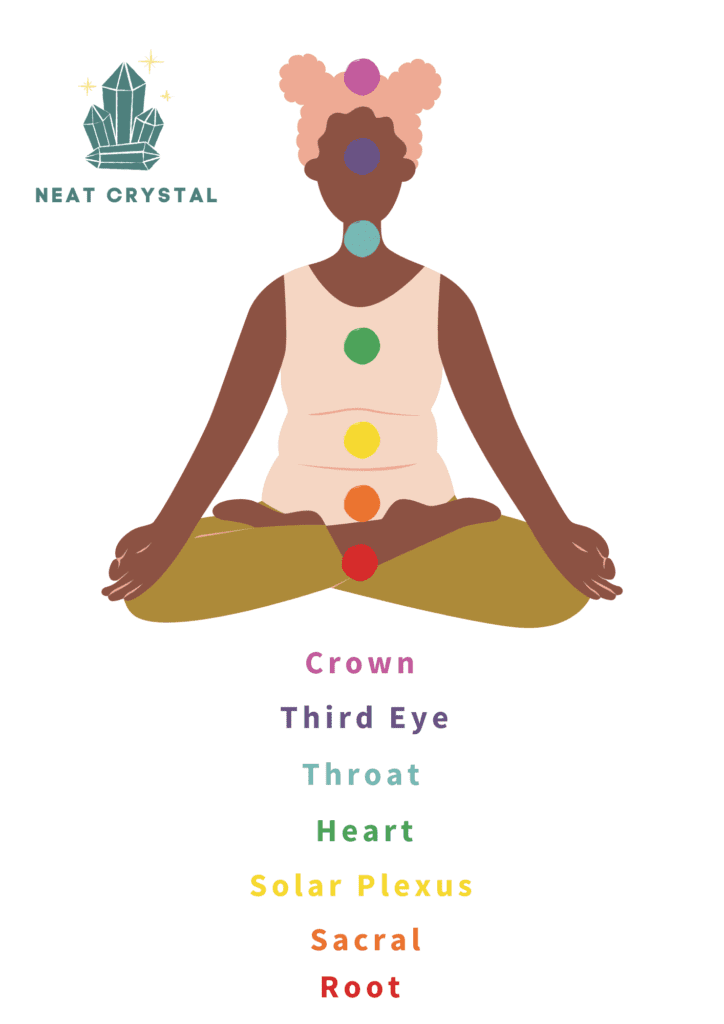
So, pure quartzite and calcite are white, meaning they are associated with the crown chakra. As a result, they can help with spirituality and connecting to the divine.
Element Association
Calcite is an earth stone, whereas quartzite is associated with the fire element.
Many cultures have developed the idea of elements to explain nature. In the west, this idea was created by the ancient Greeks and consisted of 4 elements: Earth, Air, Fire, and Water. In India, another element is added: Akasha, representing the foundation of the other elements.
The 4 elements represent the following:
- Earth for personal growth, stability and security
- Water for love, friendships and emotions
- Air for intellect, wisdom and communication
- Fire for energy, passion and action
By looking at a crystal’s or gemstone’s properties, we can determine which element fits best.
For calcite, its connection to the earth element means they can bring qualities like reliability, responsibility, organization, and security.
Quartzite’s connection to the fire element means it will help in the cleansing of the aura, reconnecting with our feelings and counteracting feelings of helplessness.


Ruling Planet
When we talk about a ruling planet, we simply mean the celestial body that has more impact on the stone than other planets.
Calcite is believed to be governed by the moon. The moon, as a ruling planet, governs our feelings and emotions. It is also associated with fertility and nurturing abilities. A strong moon defines how we associate with others and reflects our emotional state. Quartzite, on the other hand, is ruled by Venus. This planet represents beauty, luxury, and love.
Numerical Vibration
Calcite vibrates at the frequency of 8. This number is considered a lucky number that represents wealth and achievements. People who resonate with this number are born leaders, assertive and responsible. The power of this number is the feminine energies that drive you towards your goal.
Quartzite vibrates at the frequency of 4. This number is used to represent knowledge, authority, order, and discipline. People who resonate with this number are organized, disciplined, hardworking, and dependable. Stones like quartzite can be used to initiate some of these values, as well as encourage open-mindedness and patience.
Also read: Honey Calcite vs Citrine: This is the Difference
Best Combination
To get the most out of our work with crystals, it can be incredibly beneficial to pair and combine crystals with similar properties. This way, they can strengthen and enhance each other. Below you’ll find some interesting options.
- Amethyst paired with white calcite is a helpful for depression, stress, and anxiety.
- You can also pair white calcite with lapis lazuli or sodalite to unlock psychic abilities.
- Quartzite can be paired with amethyst to relieve stress and anxiety by eliminating all negative energies and inviting calm.
- When Quartzite is paired with apophyllite, the combination increases positivity and invites elevated energies into the room.
- Quartzite and Amazonite can also be paired for emotional well-being and stress relief.
- Sodalite and quartzite are powerful combinations for self-expression, peace, and conflict resolution.
- Hematite and quartzite will be a great combination for grounding energies.
Also read: Green Calcite Vs Green Fluorite: This is the Difference
Uses
There are many different ways to use these stones. Below we’ll outline 2 options.
Jewelry
Both stones can be worn in jewelry to make the most of the stone’s abilities. There are many different colors of calcite, each related to different chakras and issues. However, the stone is quite brittle, so we do not recommend wearing calcite jewelry daily, to ensure it stays intact.
Quartzite can be worn when you feel overwhelmed by life. The stones are also worn as talismans for communication, health, and protection from the evil eye.
Home / office
Calcite and quartzite can be used to bring life and boost energies in our living spaces. The Feng Shui powers of these stones invite creativity, communication, harmony, and positive energies when needed. The stones will help with anxiety and depression.
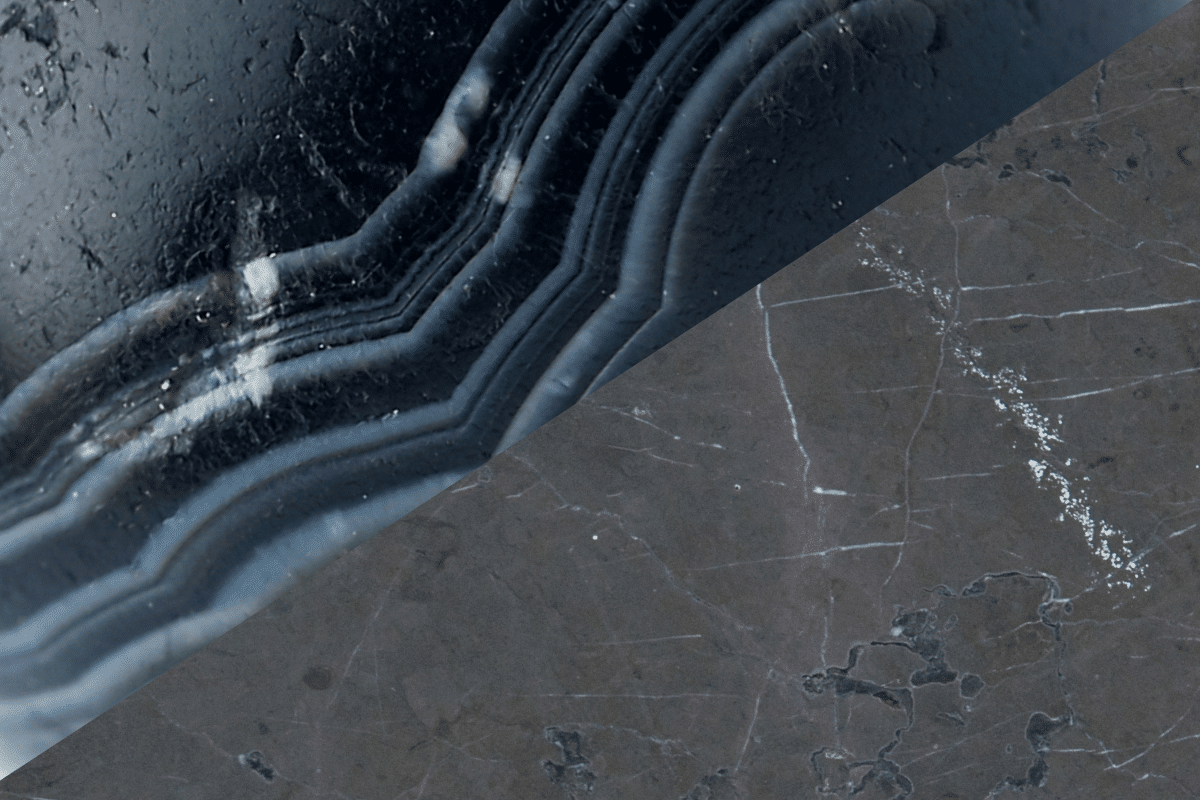


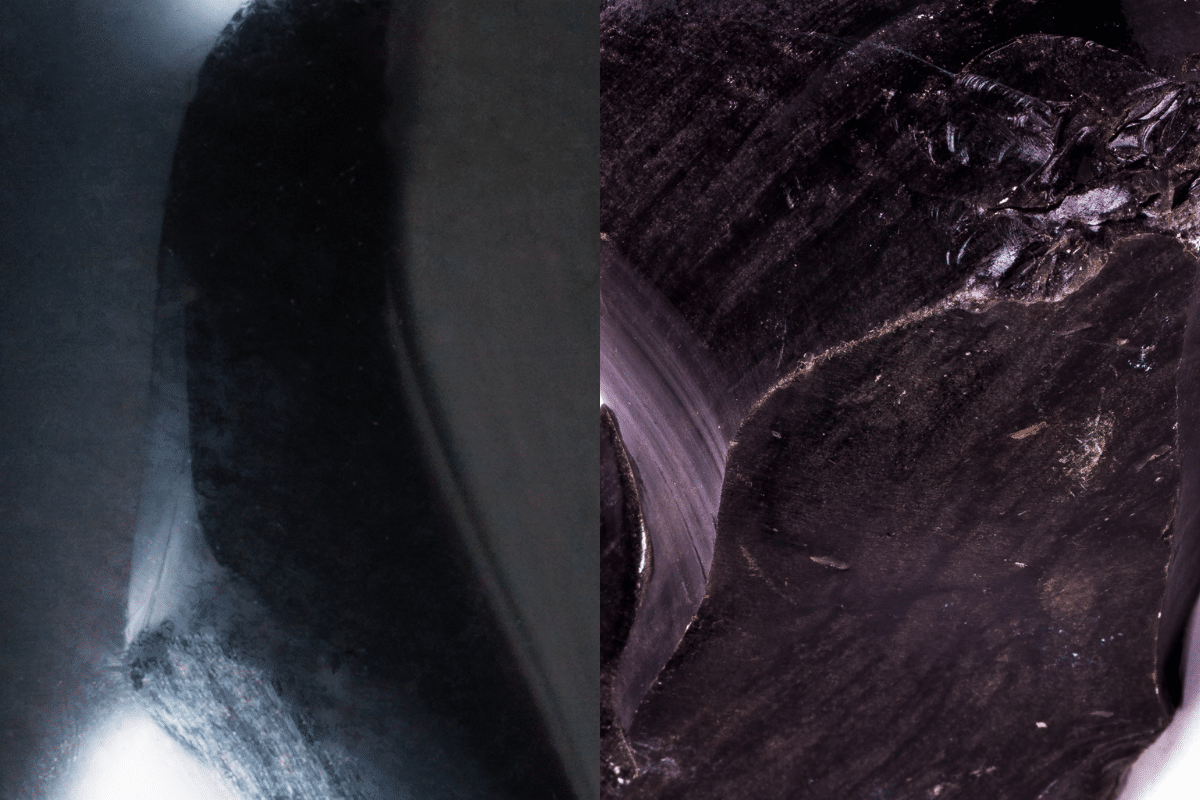

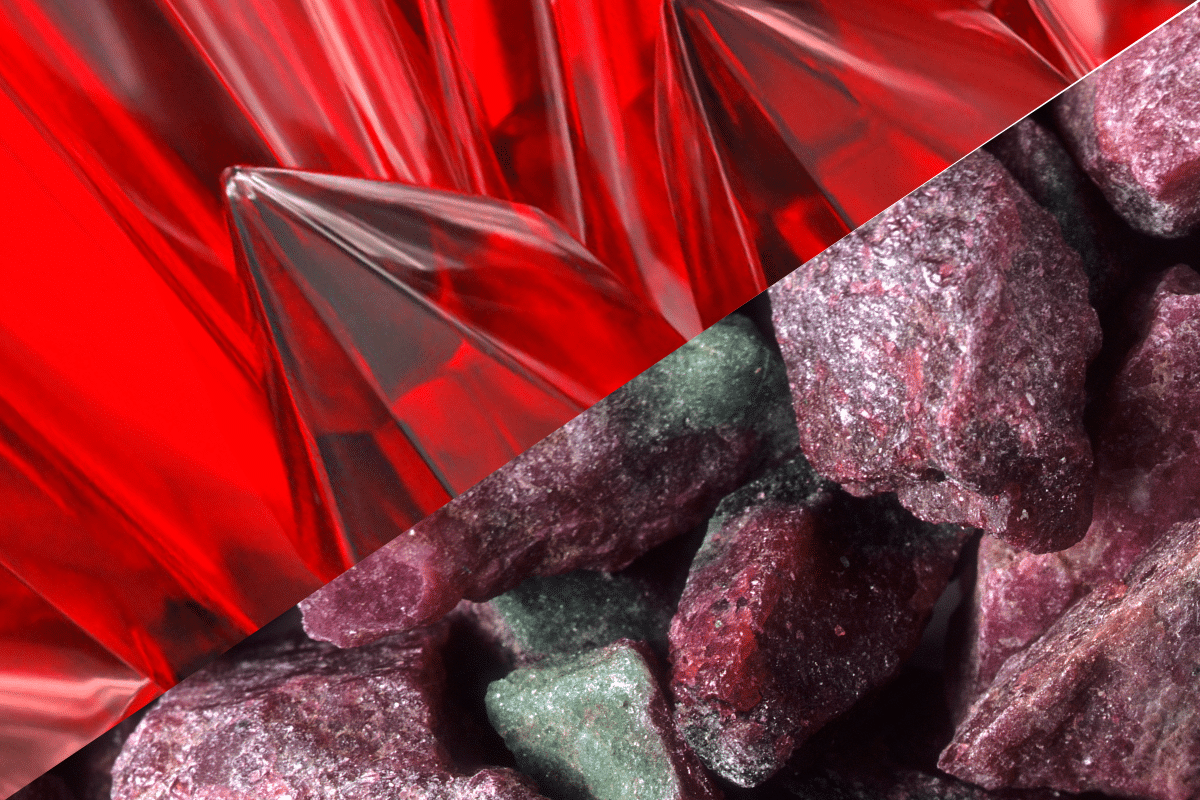

3 Comments